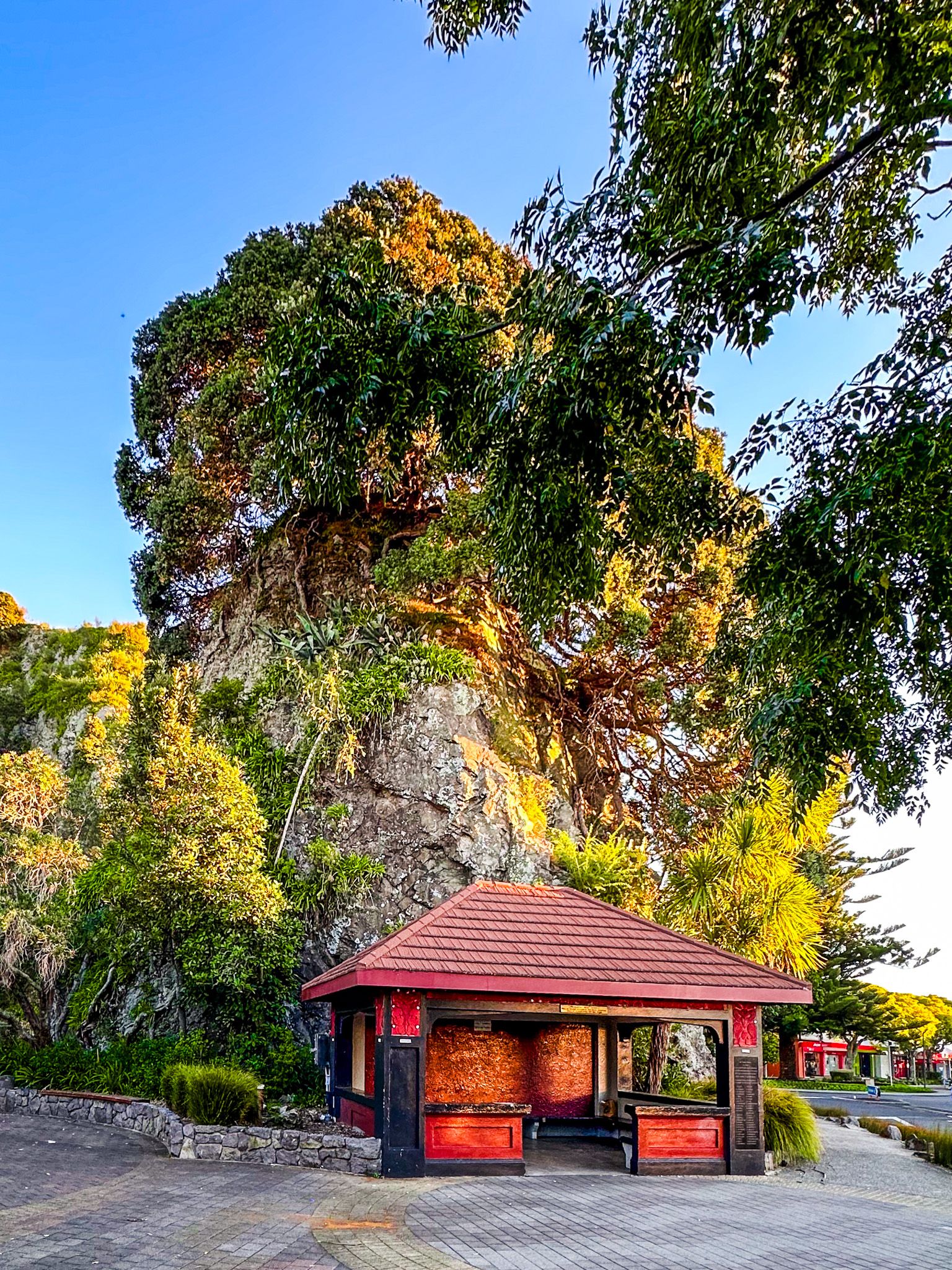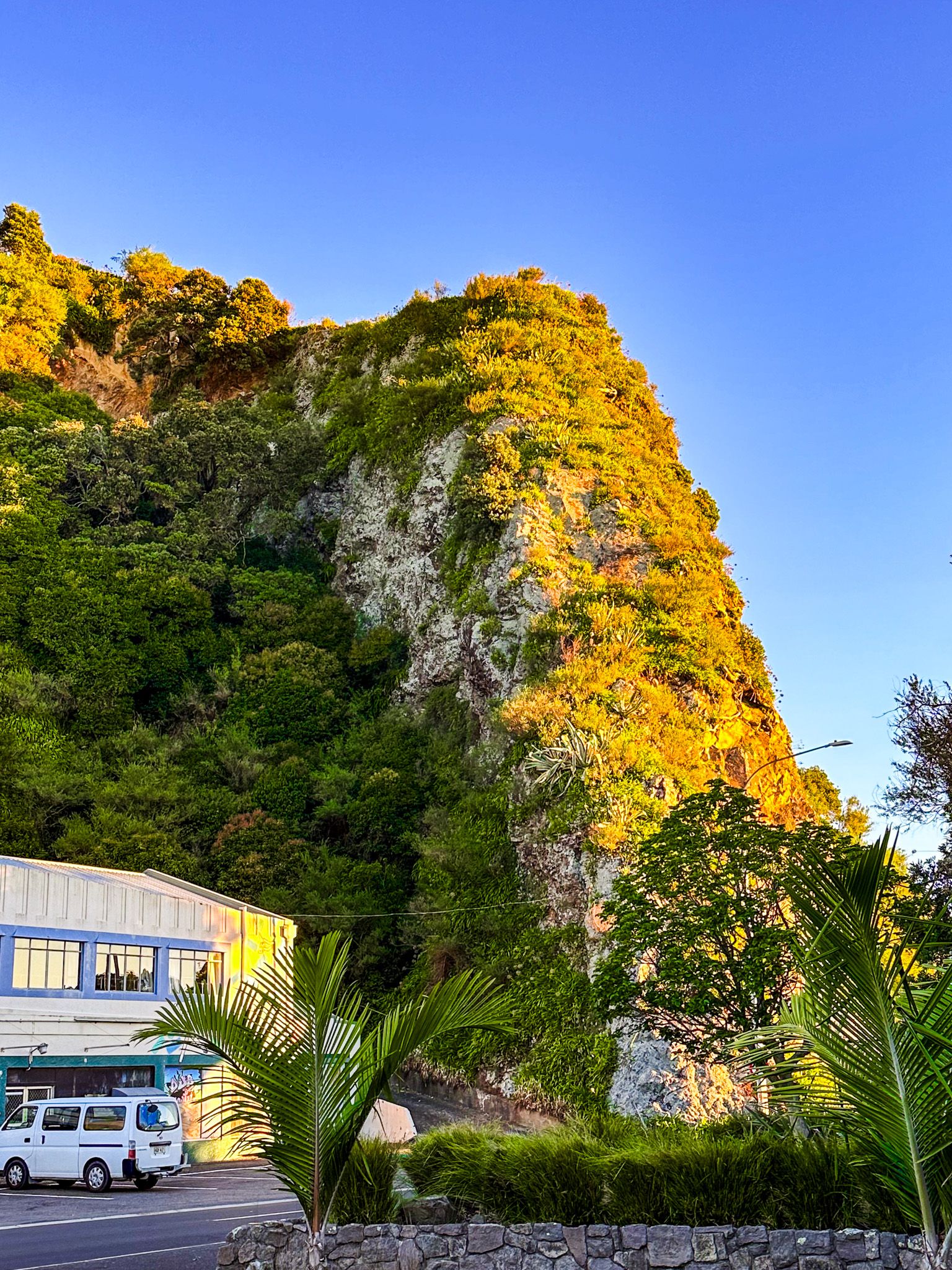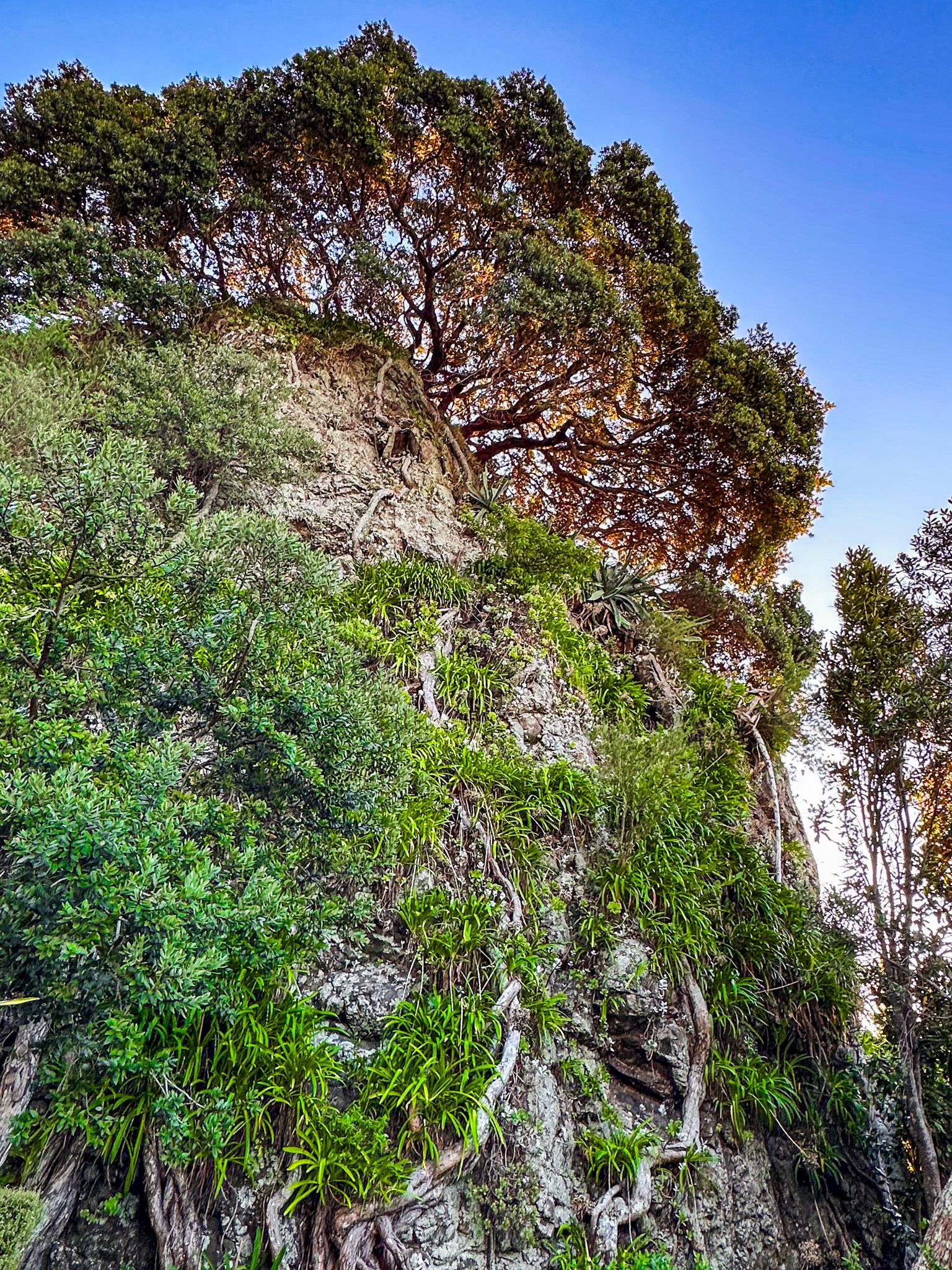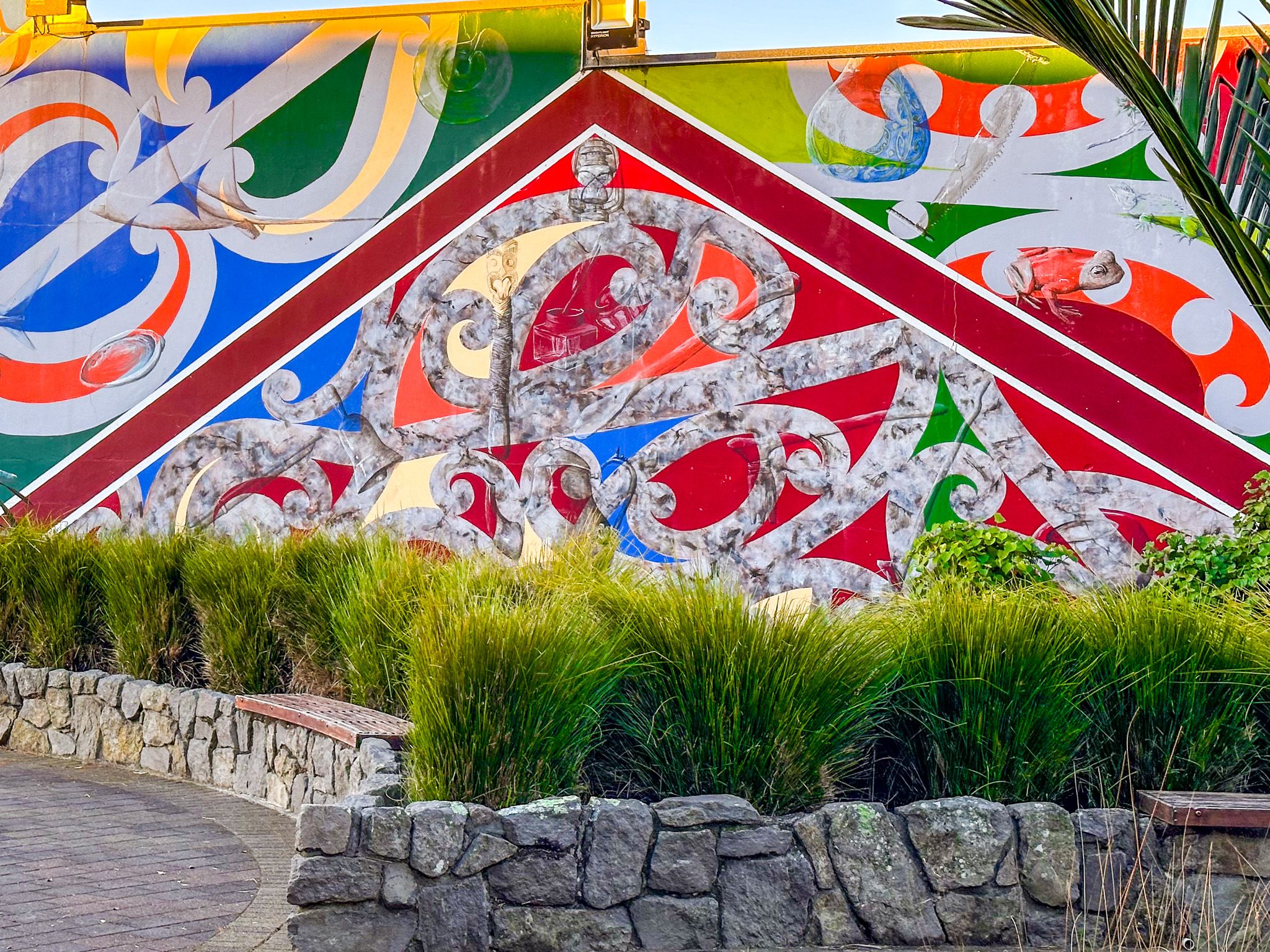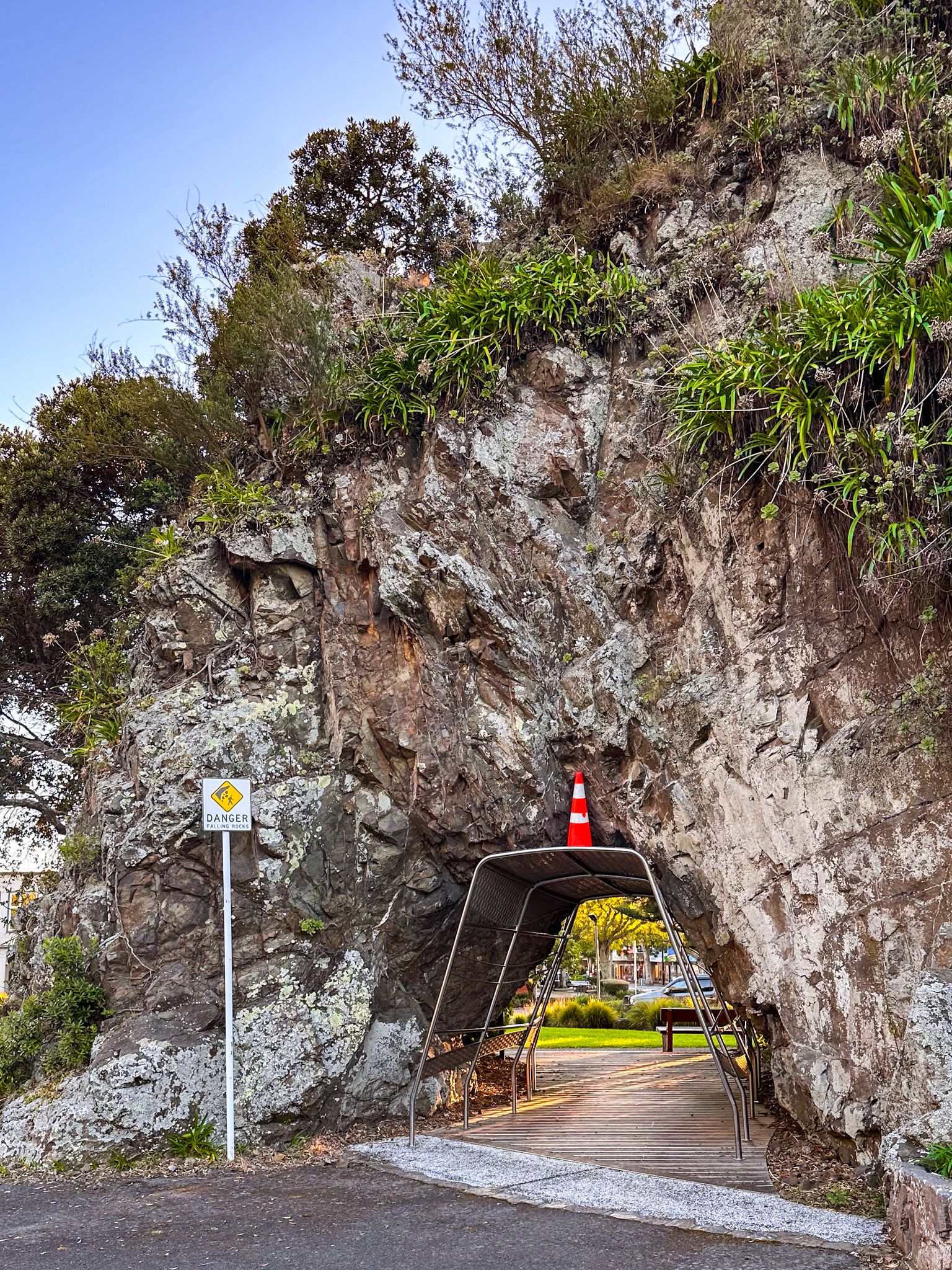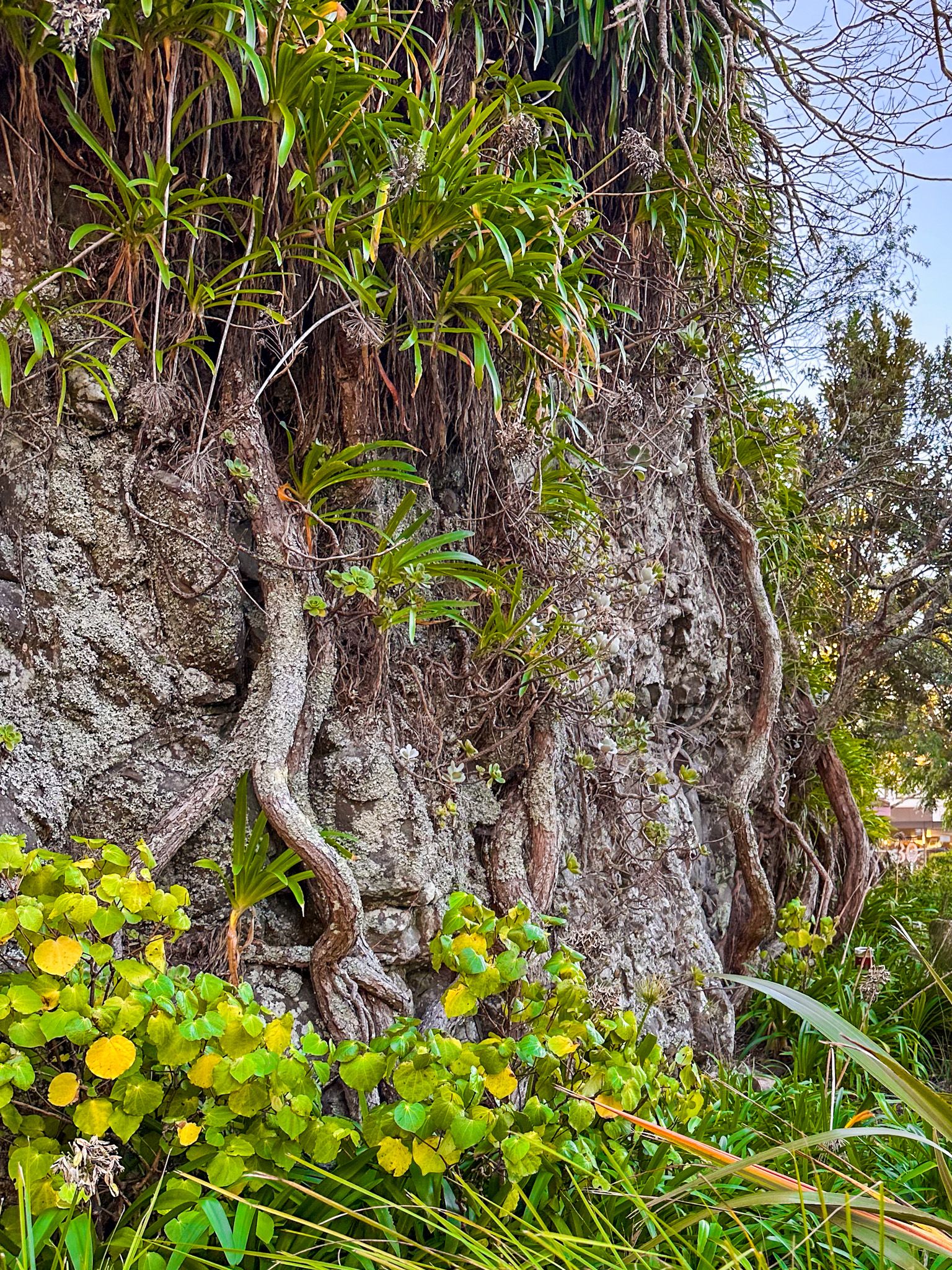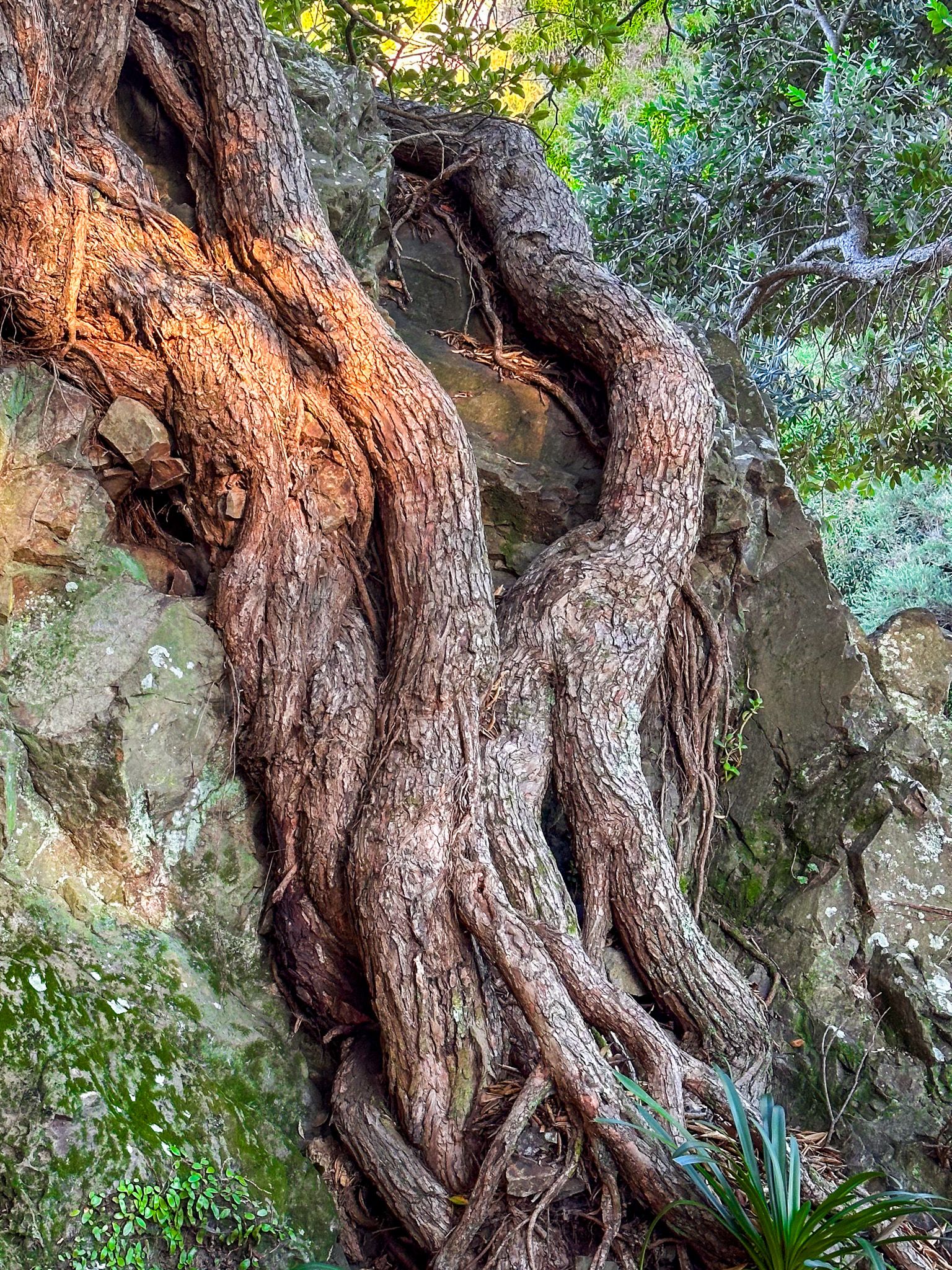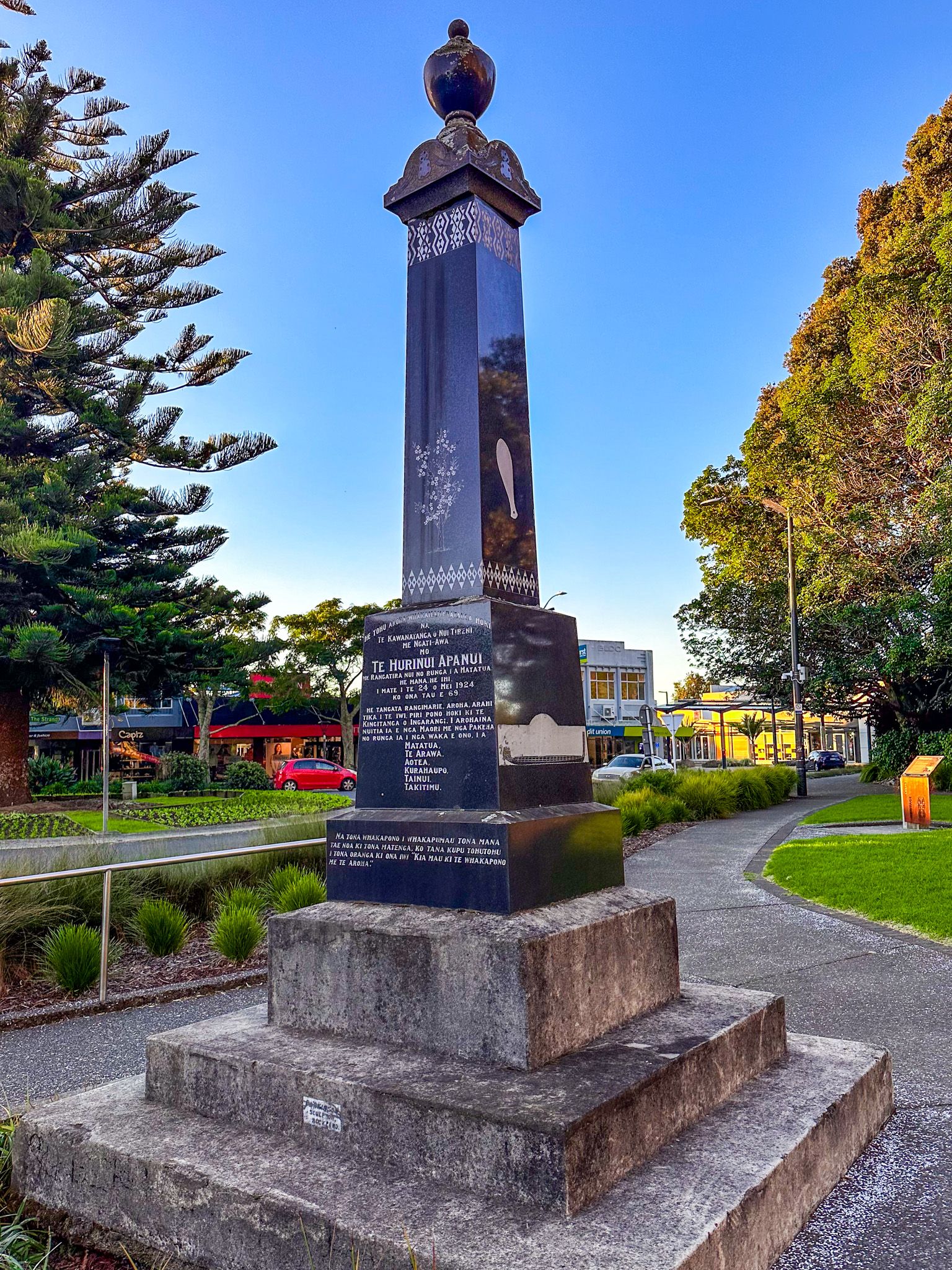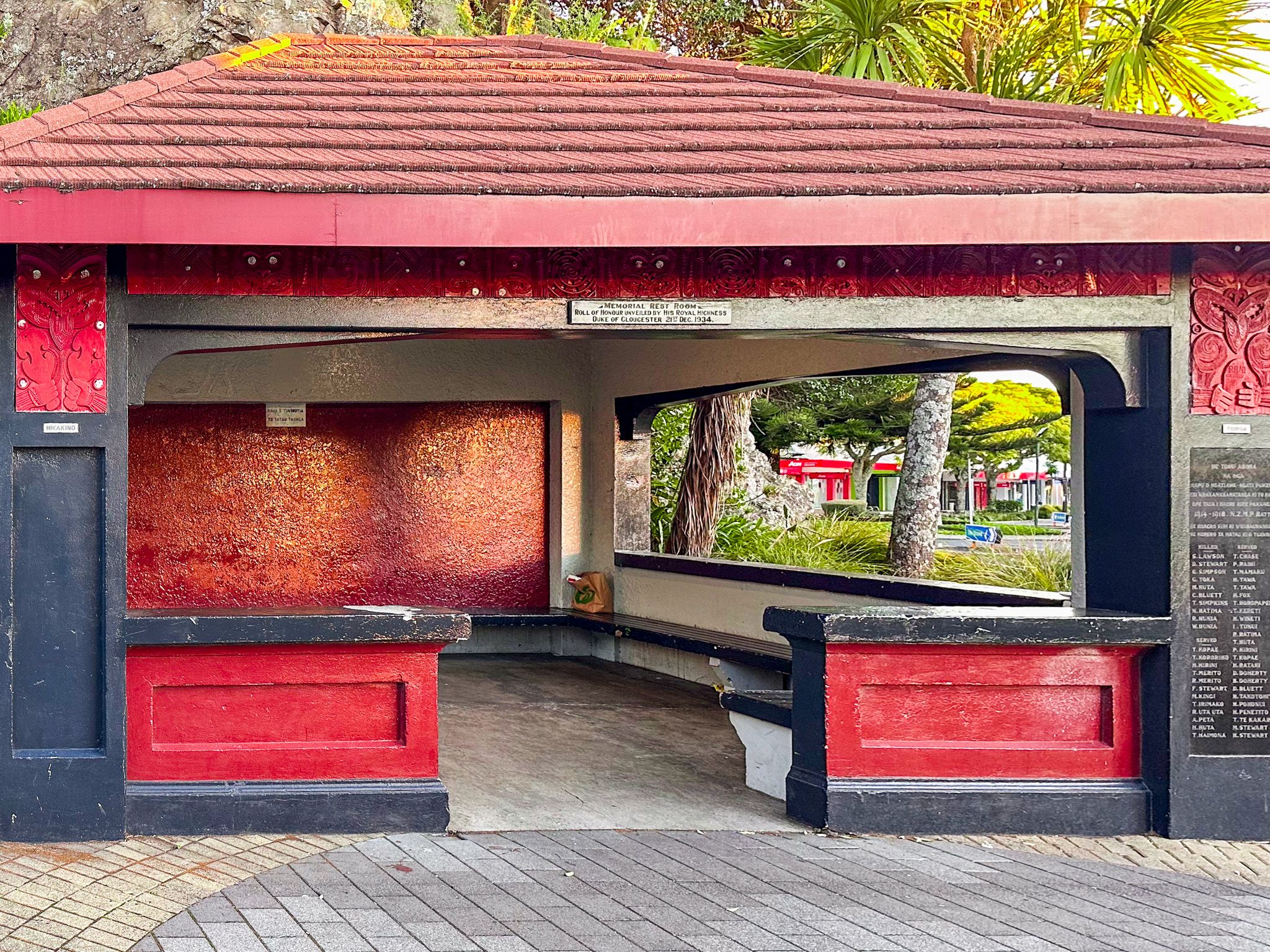Pohaturoa Rock is an imposing rock outcrop with near sheer cliff faces on The Strand, the main downtown street in Whakatāne. It is surrounded and topped by ancient karaka and poutukawa trees and has a small tunnel through one side. The karakas trees are said to have been brought to Whakatāne on the ocean-going waka Mataatua. The signposted entry to the Ngā Tapuwai o Toi Walkway is just south of the rock.
In addition to being impressive, Pohaturoa is highly symbolic. Ngāti Awa iwi connect their tangata whenua to Pohaturoa, which is said to have been created through the union of Tane (god of the forests and birds) and Hinetuparimaunga. The small tunnel called Te Arikirau was once a cave used to perform various tapu (sacred) rituals before the arrival of the missionaries and Christianity. The Waiewe Stream, also run by Pohaturoa, used its waters to anoint young warriors. The stream was covered up, and the cave and part of the rock were damaged by the development of the road, especially in the 1800s.
In June 1840, Ngāti Awa chiefs signed the Treaty of Waitangi near Pohaturoa, and each year, Ngāti Awa celebrates this at dawn. After WWI, it was agreed that Pohaturoa was an appropriate place for a war memorial. It had long been associated with war and was where local soldiers who fought in WWI were farewelled. A large shelter was added, and the names of the fallen from both world wars are on the front right side.
On the southwest side of Pohaturoa, there is a memorial for Te Hurinui Apanui. He was a Ngāti Awa chief who died in 1924 and was held in high regard by Europeans and Māori throughout the region. He protected surviving iwi interests after the confiscations of the 1860s while working with the dominant European authorities. Over 2,000 people, Europeans and Māori, attended his funeral in Whakatāne.
Today, Pohaturoa records some of the things that went wrong and some of the attempts to get it right.

